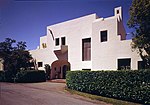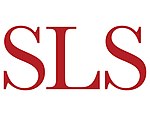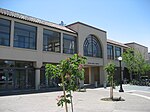Hanna–Honeycomb House
1937 establishments in CaliforniaFrank Lloyd Wright buildingsHouses completed in 1937Houses in Santa Clara County, CaliforniaHouses on the National Register of Historic Places in California ... and 3 more
National Historic Landmarks in the San Francisco Bay AreaNational Register of Historic Places in Santa Clara County, CaliforniaStanford University buildings and structures

The Hanna–Honeycomb House, also known as simply the Hanna House, located on the Stanford University campus in Stanford, California, United States, was Frank Lloyd Wright's first work in the Bay Area and his first work with non-rectangular structures. The house was chosen by the American Institute of Architects as one of seventeen buildings by the architect to be retained as an example of his contribution to American culture. It was recognized as a National Historic Landmark on June 29, 1989.
Excerpt from the Wikipedia article Hanna–Honeycomb House (License: CC BY-SA 3.0, Authors, Images).Hanna–Honeycomb House
Frenchmans Road,
Geographical coordinates (GPS) Address External links Nearby Places Show on map
Geographical coordinates (GPS)
| Latitude | Longitude |
|---|---|
| N 37.416013888889 ° | E -122.16355277778 ° |
Address
Hanna House
Frenchmans Road 737
94305
California, United States
Open on Google Maps







